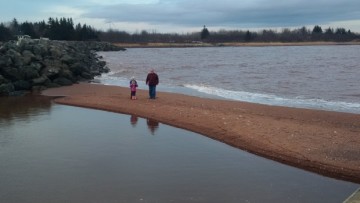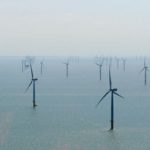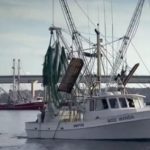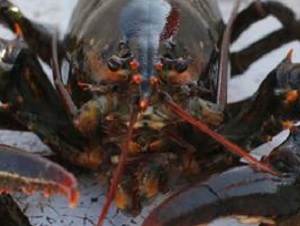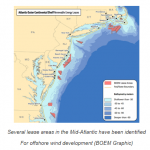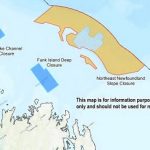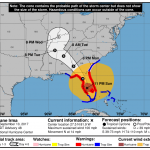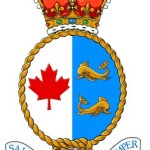Daily Archives: April 18, 2016
Salmon markets face lower supplies
 A downward shift in supplies of salmon could boost demand for Alaska fish. If that basic rule holds true, prices could move out of the basement. Some balance appears to be in the offing. Alaska’s projected salmon harvest of 161 million fish is down 40 percent from last season due to an off year for pinks. Bristol Bay’s sockeye forecast of just under 30 million is well below harvests of the past two years. That helps remove backlogs of reds, which are moving briskly through markets. A prime example: Sockeye exports to Japan, which is enduring local fishery failures, surged 320 percent at the end of last year and demand is expected to remain strong. Audio report, Read the rest here 17:51
A downward shift in supplies of salmon could boost demand for Alaska fish. If that basic rule holds true, prices could move out of the basement. Some balance appears to be in the offing. Alaska’s projected salmon harvest of 161 million fish is down 40 percent from last season due to an off year for pinks. Bristol Bay’s sockeye forecast of just under 30 million is well below harvests of the past two years. That helps remove backlogs of reds, which are moving briskly through markets. A prime example: Sockeye exports to Japan, which is enduring local fishery failures, surged 320 percent at the end of last year and demand is expected to remain strong. Audio report, Read the rest here 17:51
As Pacific sardine collapse worsens, scientists worry about possible ripple in the ecosystem
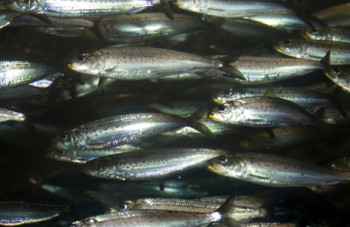 Nearly a year into a West Coast sardine fishing ban enacted to protect the collapsing population, the fish formerly worth more than $8 million to Oregon’s economy have shown no signs of a comeback. New federal research indicates numbers of the small, silvery, schooling fish have plummeted further than before the fishing moratorium, dashing any hope of lifting it in 2016. With the current sardine population hovering at 7 percent of its 2007 peak, fishermen now say they expect to wait a decade or more to revive the fishery. “I don’t want to take a pessimistic view, but I would think we’ll be shut down until 2030,” said Ryan Kapp, a Bellingham, Washington, fisherman who advises the Pacific Fishery Management Council on sardines and other fish. Read the article here 15:33
Nearly a year into a West Coast sardine fishing ban enacted to protect the collapsing population, the fish formerly worth more than $8 million to Oregon’s economy have shown no signs of a comeback. New federal research indicates numbers of the small, silvery, schooling fish have plummeted further than before the fishing moratorium, dashing any hope of lifting it in 2016. With the current sardine population hovering at 7 percent of its 2007 peak, fishermen now say they expect to wait a decade or more to revive the fishery. “I don’t want to take a pessimistic view, but I would think we’ll be shut down until 2030,” said Ryan Kapp, a Bellingham, Washington, fisherman who advises the Pacific Fishery Management Council on sardines and other fish. Read the article here 15:33
New England Fishery Management Council meeting in Mystic, CT, April 19-21, 2016 – Listen Live!
 The public is invited to listen in to the New England Fishery Management Council’s April 19-21, 2016 Council meeting. This meeting is scheduled to begin on Tues., April 19 at 9:00 a.m. at the Hilton Mystic, 20 Coogan Ave., Mystic, CT . On Wed. and Thurs. the meeting will start at 8:30 a.m. To view the Final Council Meeting Agenda, Click here To register to Listen Live, Click here 12:16
The public is invited to listen in to the New England Fishery Management Council’s April 19-21, 2016 Council meeting. This meeting is scheduled to begin on Tues., April 19 at 9:00 a.m. at the Hilton Mystic, 20 Coogan Ave., Mystic, CT . On Wed. and Thurs. the meeting will start at 8:30 a.m. To view the Final Council Meeting Agenda, Click here To register to Listen Live, Click here 12:16
What the fish in Alaska’s oceans are eating — and what that can tell us
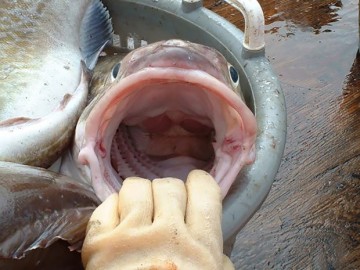 Ever wonder what eats the salmon that don’t make it back to Bristol Bay? Or what fish are cannibals? A new database released online in late March by the National Marine Fisheries Service offers a glimpse into fish diets, based on decades of study of their stomach contents. It ranges from commonly known species like halibut, Pacific cod and pollock, to lesser-known fish, like sculpins, snailfish and even alligatorfish. Herring and salmon also make an appearance, although they aren’t the focus. Kerim Aydin, a supervisory fisheries biologist at the in Seattle, said the database includes collections that have been in the works since the 1980s, and is largely focused on commercial groundfish species. Read the rest here 10:55
Ever wonder what eats the salmon that don’t make it back to Bristol Bay? Or what fish are cannibals? A new database released online in late March by the National Marine Fisheries Service offers a glimpse into fish diets, based on decades of study of their stomach contents. It ranges from commonly known species like halibut, Pacific cod and pollock, to lesser-known fish, like sculpins, snailfish and even alligatorfish. Herring and salmon also make an appearance, although they aren’t the focus. Kerim Aydin, a supervisory fisheries biologist at the in Seattle, said the database includes collections that have been in the works since the 1980s, and is largely focused on commercial groundfish species. Read the rest here 10:55
MFV Louisa was rescued four times before tragic sinking
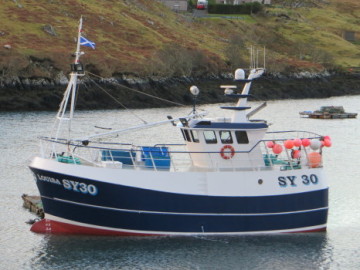 The crab boat which sank off the Western Isles just over a week ago was rescued by lifeboats on four previous occasions, prior to the tragedy. Skipper Paul Alliston, 42, remains unaccounted for after the MFV Louisa sank off the coast of Mingulay. Fishermen Martin Johnstone, 29, from Caithness and Chris Morrison, 27, from Stornoway both died in the incident, while crewman Lachlann Armstrong, 27, managed to swim to safety. Police are carrying out a joint investigation with the Marine Accidents Investigation Branch (MAIB) and are considering bringing the boat to the surface as part of the inquiry. Yesterday, it emerged that the vessel had been the subject of four separate lifeboat call-outs. The crew were rescued for a second time that month in February 2014 when the vessel ran aground on the uninhabited Ascrib Islands in Loch Snizort in north-west Skye. Read the rest here 09:59
The crab boat which sank off the Western Isles just over a week ago was rescued by lifeboats on four previous occasions, prior to the tragedy. Skipper Paul Alliston, 42, remains unaccounted for after the MFV Louisa sank off the coast of Mingulay. Fishermen Martin Johnstone, 29, from Caithness and Chris Morrison, 27, from Stornoway both died in the incident, while crewman Lachlann Armstrong, 27, managed to swim to safety. Police are carrying out a joint investigation with the Marine Accidents Investigation Branch (MAIB) and are considering bringing the boat to the surface as part of the inquiry. Yesterday, it emerged that the vessel had been the subject of four separate lifeboat call-outs. The crew were rescued for a second time that month in February 2014 when the vessel ran aground on the uninhabited Ascrib Islands in Loch Snizort in north-west Skye. Read the rest here 09:59
Scientists find a crab party deep in the ocean
 A year ago, researchers in two small submarines were exploring a seamount — an underwater, flat-topped mountain — off the Pacific coast of Panama when they noticed a dense cloud of sediment extending 4 to 10 meters above the seafloor. One of the submarines approached closer, and the scientists could soon see what was kicking up the cloud: thousands of small, red crabs that were swarming together like insects. At the densest points in the swarm, there were more than 70 crabs in a square meter of ocean bottom, and this occurred consistently in a water depth of 350 to 390 meters. The crabs, all 2.3 centimeters in carapace length and larger, were moving together in the same general direction. Some would jump and swim for about 10 centimeters or so before landing back in the pack. Video, Read the rest here 09:41
A year ago, researchers in two small submarines were exploring a seamount — an underwater, flat-topped mountain — off the Pacific coast of Panama when they noticed a dense cloud of sediment extending 4 to 10 meters above the seafloor. One of the submarines approached closer, and the scientists could soon see what was kicking up the cloud: thousands of small, red crabs that were swarming together like insects. At the densest points in the swarm, there were more than 70 crabs in a square meter of ocean bottom, and this occurred consistently in a water depth of 350 to 390 meters. The crabs, all 2.3 centimeters in carapace length and larger, were moving together in the same general direction. Some would jump and swim for about 10 centimeters or so before landing back in the pack. Video, Read the rest here 09:41
Safety switch could have saved this young Fisherman’s life from electrocution
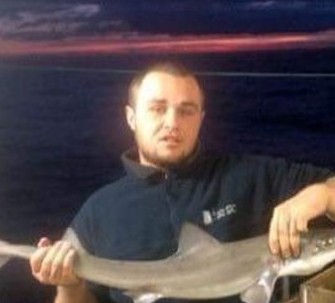 An inquest into the death of a man electrocuted on a Top End prawn trawler has heard a safety switch could have saved his life. Ryan Donoghue, 20, was using an angle grinder on the deck of Austral Fisheries’ Newfish 1 to cut rusted shackles when he was hit by a wave and electrocuted. Counsel assisting the Coroner, Kelvin Currie, told the inquest the grinder had been plugged into a socket without a safety switch, known as a residual current device (RCD). Newfish 1 was about 11 hours from the Arnhem Land coast when the accident occurred in November 2013. Read the rest here 09:11
An inquest into the death of a man electrocuted on a Top End prawn trawler has heard a safety switch could have saved his life. Ryan Donoghue, 20, was using an angle grinder on the deck of Austral Fisheries’ Newfish 1 to cut rusted shackles when he was hit by a wave and electrocuted. Counsel assisting the Coroner, Kelvin Currie, told the inquest the grinder had been plugged into a socket without a safety switch, known as a residual current device (RCD). Newfish 1 was about 11 hours from the Arnhem Land coast when the accident occurred in November 2013. Read the rest here 09:11






